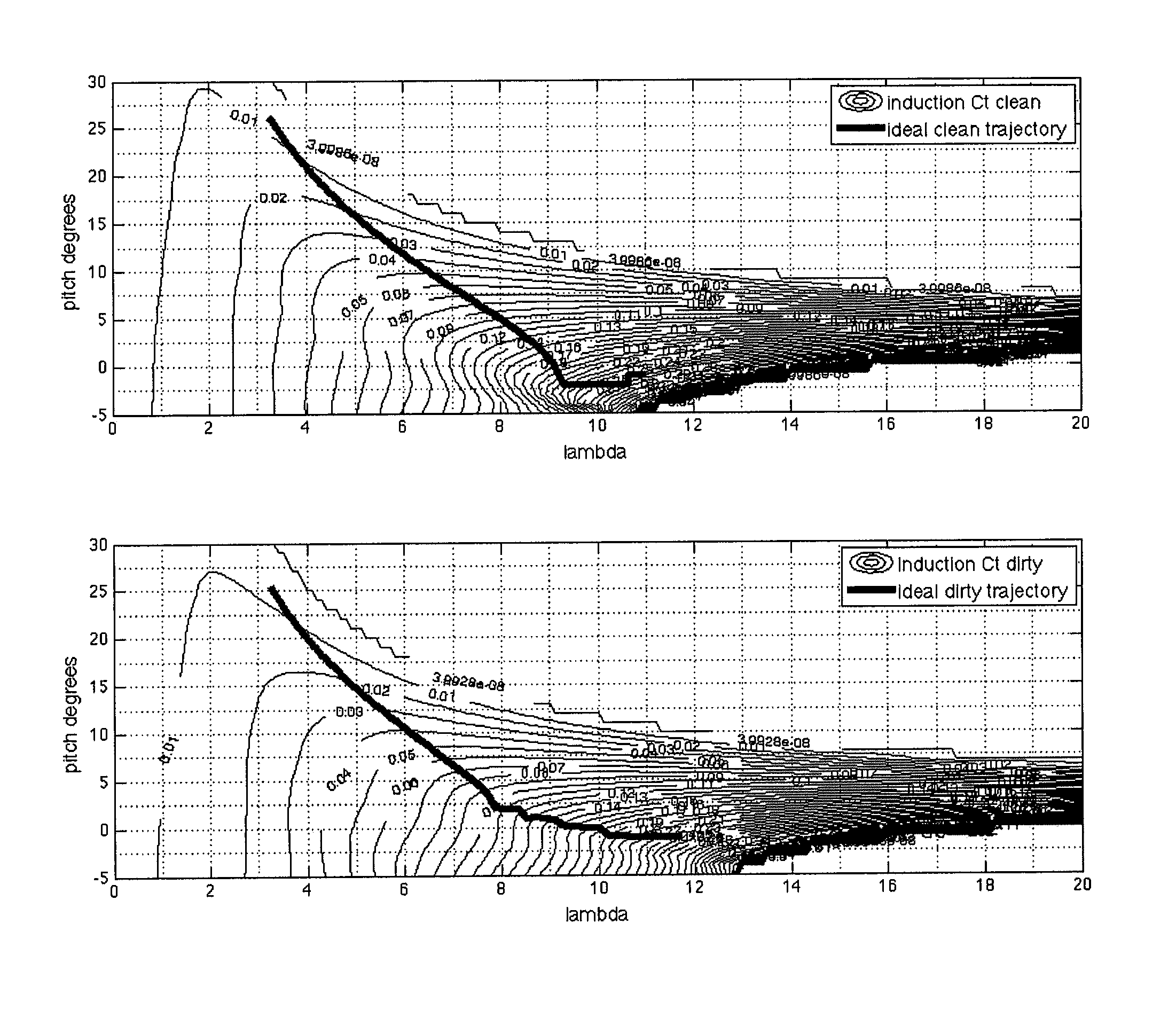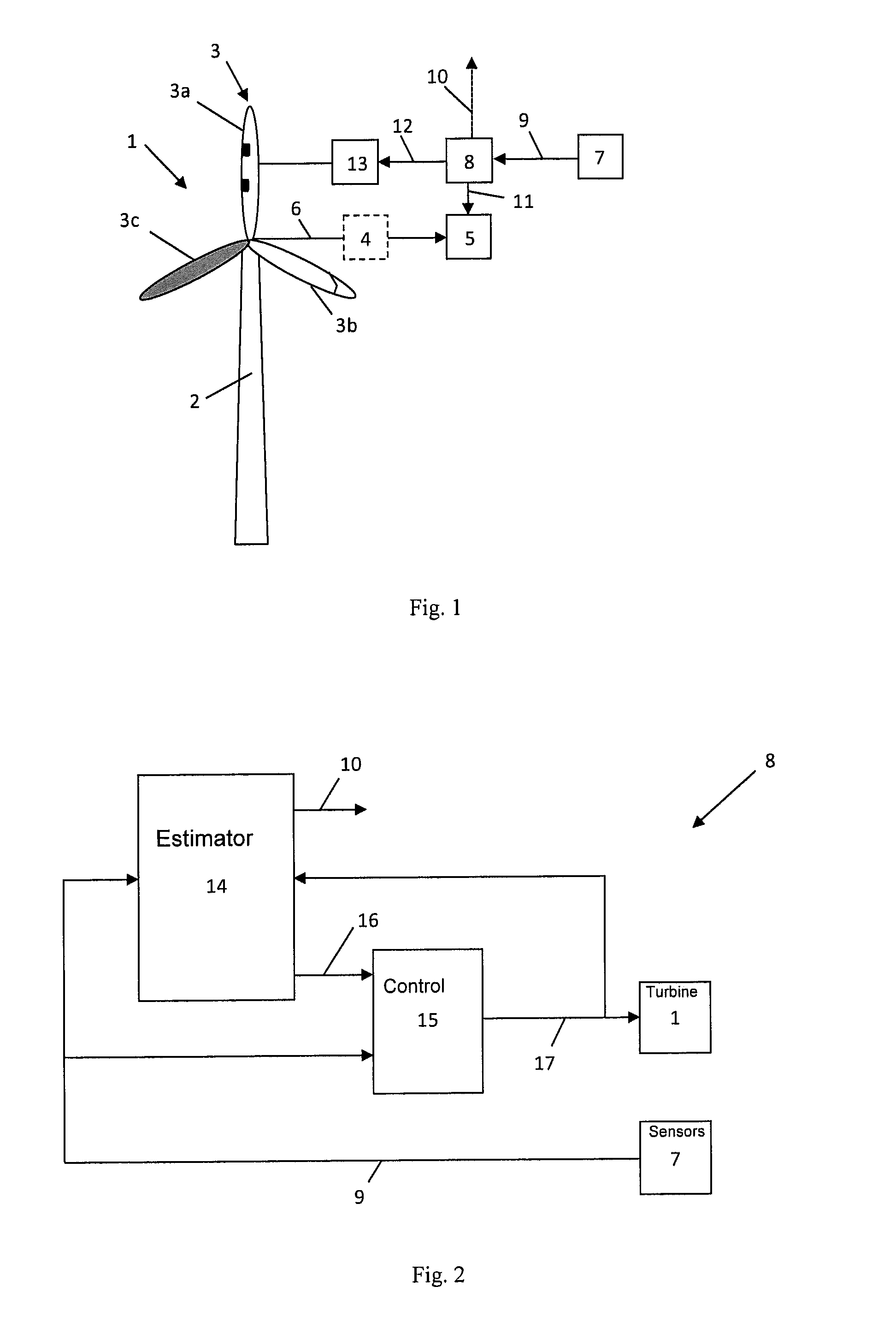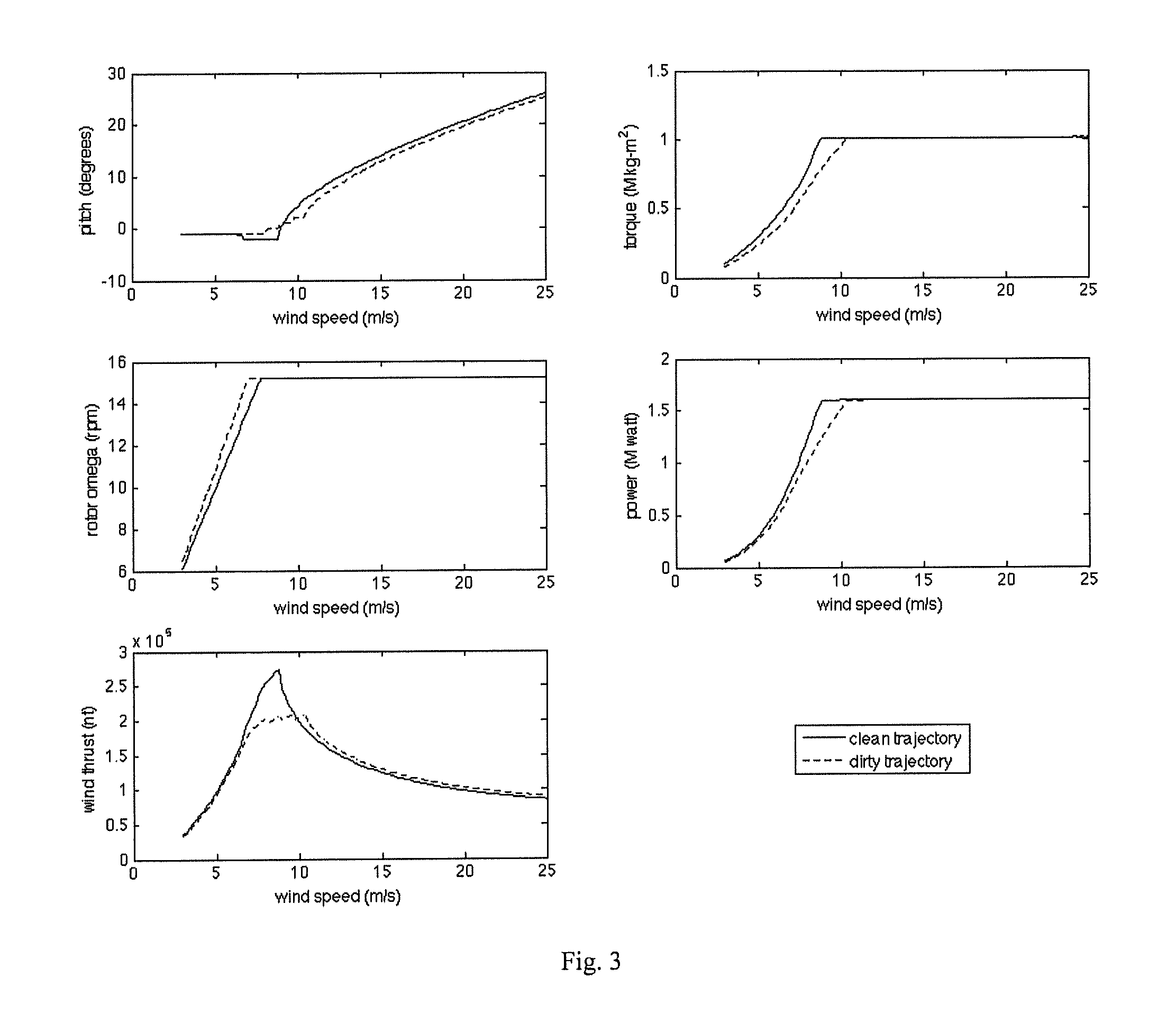Method for operating a wind turbine based on degradation of wind turbine blade
a technology of wind turbine blades and operations, which is applied in the direction of machines/engines, mechanical equipment, proportional integration algorithms, etc., can solve the problems of aerodynamically shaped outer surfaces, ice accumulation on the leading edge, and sand particles and other wind-born debris erode the critical leading edge of the fast moving wind turbine blades, so as to achieve maximum power production, reduce generator torque, and increase rotation speed
- Summary
- Abstract
- Description
- Claims
- Application Information
AI Technical Summary
Benefits of technology
Problems solved by technology
Method used
Image
Examples
first embodiment
[0111]FIG. 6 shows the adapted pitch angle, generator torque, and rotation speed of the wind turbine optimized for maximum power production according to a In this embodiment, the ideal aerodynamic thrust and the ideal aerodynamic torque of the normal wind turbine of FIG. 3 is scaled by means of a common scaling factor, kc, according to equation (1). Here the ideal aerodynamic thrust and torque coefficients are scaled by means of a factor of kc=0.8, after which the control system adapts the ideal pitch angle, generator torque, and rotation speed according to these scaled aerodynamic coefficients.
second embodiment
[0112]FIG. 7 shows the adapted pitch angle, generator torque, and rotation speed of the wind turbine optimized for maximum power production according to a In this embodiment, the rotor radius is scaled by means of a scaling factor, kR, to determine a virtual rotor radius which in turn is used to scale the ideal aerodynamic thrust and the ideal aerodynamic torque of the normal wind turbine of FIG. 3 according to equation (2). Here the ideal aerodynamic thrust and torque coefficients are scaled by means of a factor of kR=0.92, after which the control system adapts the ideal pitch angle, generator torque, and rotation speed according to these scaled aerodynamic coefficients.
[0113]As illustrated in the graphs of FIGS. 6 and 7, these adapted values (solid lines) provide a more accurate representation of those (dotted lines) of the degraded wind turbine of FIG. 3. This allows the degraded wind turbine to increase the thrust acting on the rotor and thus maximize the power production durin...
third embodiment
[0119]FIG. 12 shows the adapted pitch angle, generator torque, and rotation speed of the wind turbine optimized for maximum power production according to a In this embodiment, a scaling factor, ka, is determined based on the ratio shown in FIG. 11 according to one or more criteria. The ideal induction factor of the normal wind turbine of FIG. 3 is scaled by means of this scaling factor which in turn is used to scale the aerodynamic coefficients.
[0120]The ideal aerodynamic torque coefficient of the normal wind turbine of FIG. 3 is scaled according to equation (4) using the induction factor of FIG. 9 and this scaling factor, ka. Here the ideal aerodynamic torque coefficient is scaled by means of a factor of ka=0.72.
[0121]As illustrated in FIG. 12, these adapted values (solid lines) provide a more accurate representation of those (dotted lines) of the degraded wind turbine of FIG. 3. Furthermore, scaling the ideal aerodynamic coefficients using equation (3) means that the actual aerod...
PUM
 Login to View More
Login to View More Abstract
Description
Claims
Application Information
 Login to View More
Login to View More - R&D
- Intellectual Property
- Life Sciences
- Materials
- Tech Scout
- Unparalleled Data Quality
- Higher Quality Content
- 60% Fewer Hallucinations
Browse by: Latest US Patents, China's latest patents, Technical Efficacy Thesaurus, Application Domain, Technology Topic, Popular Technical Reports.
© 2025 PatSnap. All rights reserved.Legal|Privacy policy|Modern Slavery Act Transparency Statement|Sitemap|About US| Contact US: help@patsnap.com



